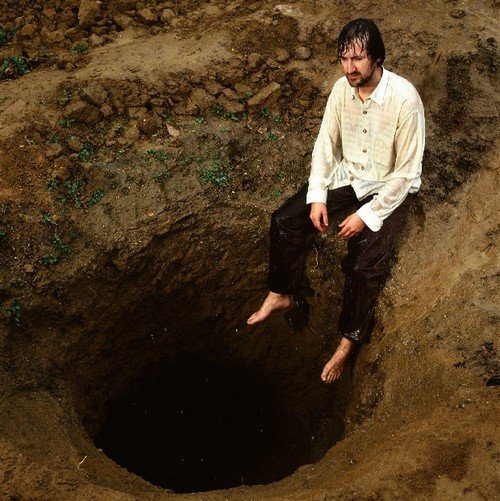Diego Perrone
dal 14/2/2008 al 14/3/2008
Segnalato da
14/2/2008
Diego Perrone
Casey Kaplan Gallery, New York
Wolves and the Casting of Bells: the title is a literal description of the artworks on view in the gallery. Preceded and influenced by the artists of the Arte Povera, Transvanguardia, and Futurist movements, Perrone creates films, sculptures, and photographs that reference Italian culture, and use specific Italian rural traditions to reflect the primordial aspects of our human condition.

Casey Kaplan is pleased to announce the highly anticipated second US solo exhibition “Wolves and the Casting
of Bells” by the Italian artist, Diego Perrone. This exhibition is in response to the artist’s recent solo museum
exhibitions at CAPC - Musée d’Art Contemporain, Bordeaux, France and MAMbo - Museo d'Arte Moderna di
Bologna, Bologna, Italy, entitled, “La Mamma di Boccioni in ambulanza e la fusione della campana.”
“Wolves and the casting of Bells,” is a literal description of the artworks on view in the gallery. Preceded and
influenced by the artists of the Arte Povera, Transvanguardia, and Futurist movements, Perrone creates films,
sculptures, and photographs that reference Italian culture, and use specific Italian rural traditions to reflect the
primordial aspects of our human condition.
This exhibition presents together for the first time three new, unique sculptures from the artist’s ongoing series;
La fusione della campana (The Casting of a Bell), which began with a black fiberglass sculpture exhibited in
2005 at the Fondazione Sandretto Re Rebaudengo, Torino, Italy. Composed of grey epoxy resin and quartz
powder, the castings represent three different moments during the process of manufacturing a large-scale
bronze bell. Each work documents the technical procedures that inform the construction: the volume of the
casting pit, the negative space of the interior and exterior of the bell, and the ducts used for pouring the bronze.
Individually and uniformly titled La fusione della campana, the works are inspired by the film, Andrei Rublev,
1966, directed by Andrei Tarkovsky, in which the main character, Andrei Rublev, is an artist battling an
archetypal internal struggle. In the film’s climax, Rublev has a life-changing revelation upon witnessing the
triumph of a craftsman who completes the difficult task of casting a bell.
La fusione della campana, 2007 represents an “empty space” in three-dimensions, a concept that evolved from
Perrone’s first exhibition at the gallery in 2002 and the idea behind the photographic series I pensatori di buchi
(The hole thinkers), 2002. Here, the artist creates another aesthetic paradox with the trio, “Lupi” (Wolves).
Beginning with low-resolution images found on the Internet of veterinarians rescuing sick wolves, Perrone
transforms what would be an empathetic situation into an imaginary history - a terrifying, archaic ritual. Pixilated
and roughly edited in Photoshop, Perrone manipulates the original scenarios by replacing the human faces with
the severe, black wooden masks of Mamuttones, a traditional, ancient costume of carnival in Sardegna, Italy.
The images are then printed onto a closed cell, rigid foam sheet of Forex, and cut to various hand-drawn
shapes. Finally, using a self-devised heat-forming method, Perrone manipulates the Forex to create organic,
insect-like, forms. Displayed on metal rods jutting out of the gallery walls, the works invade the viewer’s space
and remain suspended in a tantalizing tension between beautiful object and menacing subject.
In 2008, the artist will participate in: “Estratos,” Contemporary Art Project Murcia, curated by Nicolas Bourriaud
and Aurelia Kreinbühl, PAC Murcia, Murcia, Spain and “Italics: Italian Art Between Tradition and Revolution,
1968-2008” curated by Francesco Bonami and co-presented by the Palazzo Grassi, Venice, Italy in 2008 and
the Museum of Contemporary Art, Chicago, IL in 2009. Perrone’s solo exhibition, “La Mamma di Boccioni in
ambulanza e la fusione della campana,” was curated by Charlotte Laubard and Andrea Viliani, which opened
May 2007 at CAPC-Musée d’Art Contemporain, Bordeaux, France, and traveled to the MAMbo-Museo d'Arte
Moderna di Bologna, Bologna, Italy in December 2008.
Casey Kaplan Gallery
525 West 21st Street - New York
Free admission



